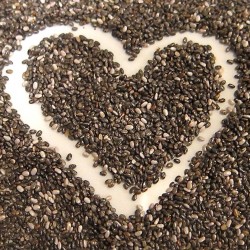-
No products in the cart.
Why a Low GI Diet is Better than a Low-Carb Diet for Weight Control

The Research
A research was carried out by the New Balance Foundation Obesity Prevention Center of the Boston Children’s hospital on 21 overweight/obese individuals who had lost weight by following a diet plan. They were aged 18-40, and the research was done over a 3-month period, concentrating on 3 different types of diets :
– The low-carbohydrate diet
– The low-fat diet
– The low glycemic index (GI) diet
The research aimed to study the effect of the above 3 diets on energy expenditure , thus identifying which diet helps people burn the most calories a day and would, therefore, help keep them from regaining the weight they had lost.The researchers measured the participants’ levels of hormones, enzymes, blood fats and insulin sensitivity, and other markers of heart health and diabetes risk.
The Results
Results showed that participants on the low-carb diet burned the most calories — on average 325 calories more a day compared with the low-fat group — however, there was a side effect. These low-carb dieters also saw increases in the stress hormone cortisol and CRP, a marker of inflammation and a risk factor for heart disease.
Individuals on the low-glycemic index (GI) diet burned about 150 calories more each day than the low-fat group, but without the harmful heart effects.
The low-fat dieters burned the fewest calories a day, and they also showed increases in triglycerides and lower levels of good cholesterol. Metabolism slowed down the most through the low-fat diet.
Out of the 3 diets, the best-performing winner was the low-glycemic diet, which offered a healthy way to keep metabolic rates up while making you feel full longer. The low-glycemic diet does not drastically reduce any major nutrient- instead, it focuses on including a wide variety of foods with high-quality nutrients — for maintaining weight loss.
“For weight loss and heart disease prevention, avoid diets that severely restrict any major nutrient, either fat or carbohydrate,” said Dr. David Ludwig, director of the New Balance Foundation Obesity Prevention Center at Boston Children’s Hospital, to Bloomberg News. “Instead, focus on reducing the highly processed carbohydrates that cause surges and crashes in blood sugar like white bread, white rice, prepared breakfast cereals, those low-fat snack foods and concentrated sugars.” Those foods are high GI foods- the list includes cornflakes, instant porridge/soups, instant noodles, biscuits, pastries. Generally, the more cooked or processed a food, the higher its GI. However, other factors such as ripeness/storage, processing, cooking method, will also affect the GI of the food.
How to maintain weight loss through a low-glycemic diet
One should eat fibre-rich, natural carbohydrates, proteins and healthy fats. The list include raw unsalted nuts, seeds, beans/legumes, most fruits and vegetables, lean meats. Unprocessed or minimally processed grain products such as oats (not instant oats), quinoa, buckwheat, amaranth or brown/wild rice are also good for weight control.
It is helpful to note that the more ripe a fruit or vegetable is, the higher the GI. Fruit juice has a higher GI than the whole fruit.
If you do consume a high-glycemic item, such as white rice or dessert, pair it with a low-glycemic food, such as leafy green vegetables, grilled meat or fish, or dried beans/legumes, to help balance out the effect on blood glucose levels.
Portion sizes are still important for managing blood glucose and for losing or maintaining weight. Avoid overeating.
All of Nature’s Superfoods’ products belong to the Low Glycemic Index diet category. The low GI diet is balanced, nutritious and enjoyable, with results that last.

